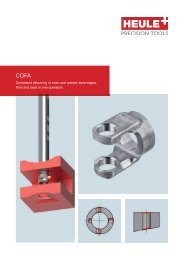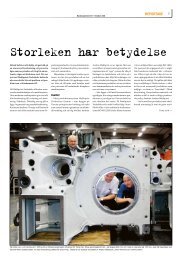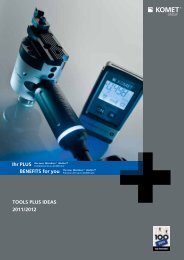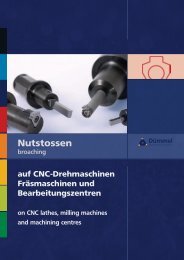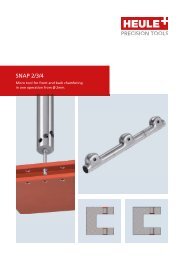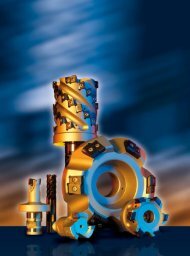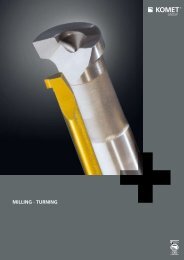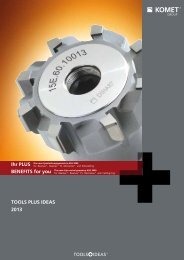1 - Komet Scandinavia AB
1 - Komet Scandinavia AB
1 - Komet Scandinavia AB
Create successful ePaper yourself
Turn your PDF publications into a flip-book with our unique Google optimized e-Paper software.
1.<br />
2.<br />
JEL® Drill Thread Milling Tool<br />
Problems possible causes solutions<br />
Chips packed or glued at the thread profile<br />
• poor coolant<br />
improve coolant (i.e. add flood coolant, lateral flute coolant supply for through holes)<br />
add coolant flutes flutes on shank<br />
Thread go-gage doesn’t fit<br />
• thread too small reduce tool radius in offset register<br />
• chips in thread improve coolant<br />
1<br />
2<br />
3.<br />
Thread is getting tapered<br />
• poor tool clamping improve tool holding (i.e. shrink fit holders)<br />
• thread milling feed too high reduce thread milling feed<br />
3<br />
4.<br />
5.<br />
Erratic tool wear<br />
• tool run out too high use better tool holders (i.e. shrink fit holders)<br />
Counterbore chips are winding around the tool<br />
• chamfer feed too low increase chamfer feed<br />
4<br />
6.<br />
7.<br />
8.<br />
Loud drilling noise (especially towards the final drilling depth)<br />
• chip problem<br />
reduce drill feed rate<br />
use tool with coolant through<br />
add peck cycle<br />
Tool breakage while drilling (especially in long chipping material)<br />
• chip problem<br />
reduce drill feed rate<br />
use tool with coolant through<br />
add peck cycle (multiple pecks)<br />
Chips glued up in the flutes<br />
• poor coolant<br />
improve coolant situation<br />
use tool with coolant through<br />
use coated tool<br />
5<br />
6<br />
7<br />
9.<br />
10.<br />
Chippage,tool breakage while thread milling<br />
• feed rate thread milling too high check that the chip grooves are free of chips after the boring operation<br />
• vibrations reduce feed rate (check whether NC feeds relate to centre point or external track)<br />
Poor thread surface (harmonics)<br />
• vibrations<br />
check tool holder (do not use modular systems !)<br />
check workpiece clamping and fixture. Where the clamping set-up is unstable introduce a distribution<br />
of the cutting force.<br />
reduce cutting speed<br />
increase tooth feed rate<br />
introduce distribution of cutting force<br />
8<br />
9<br />
Important: See chapter 9 for more application details and safety notes!<br />
73





